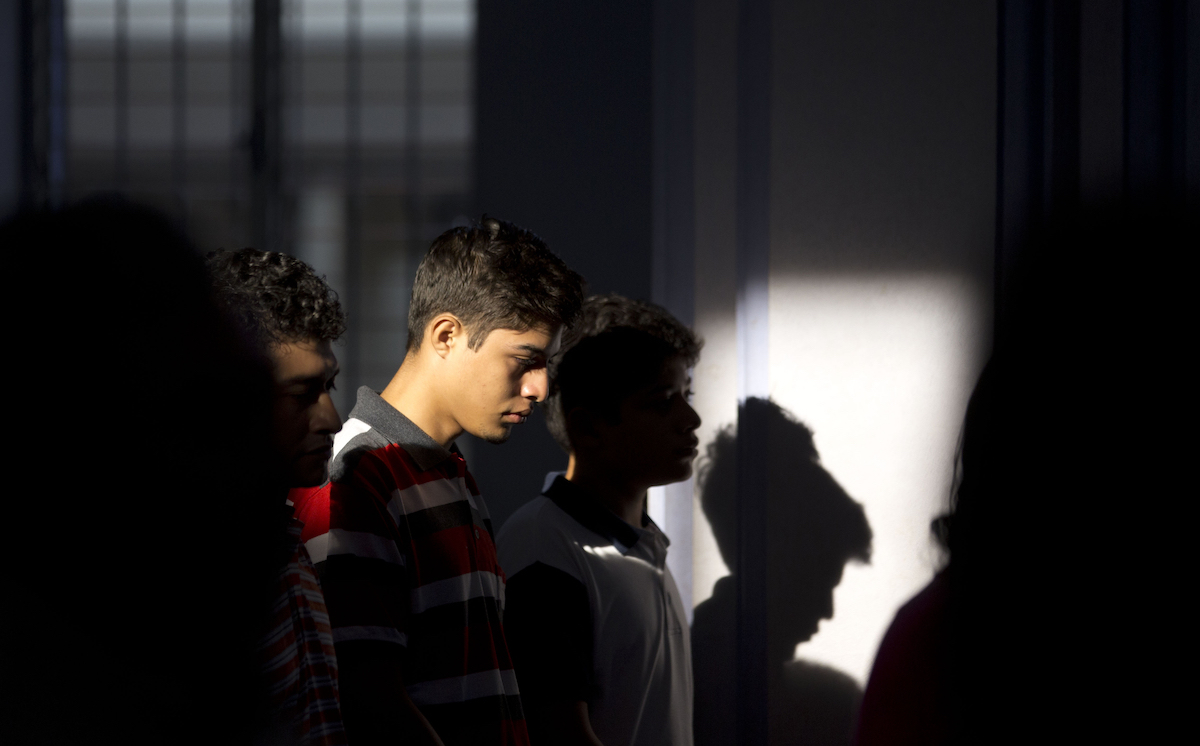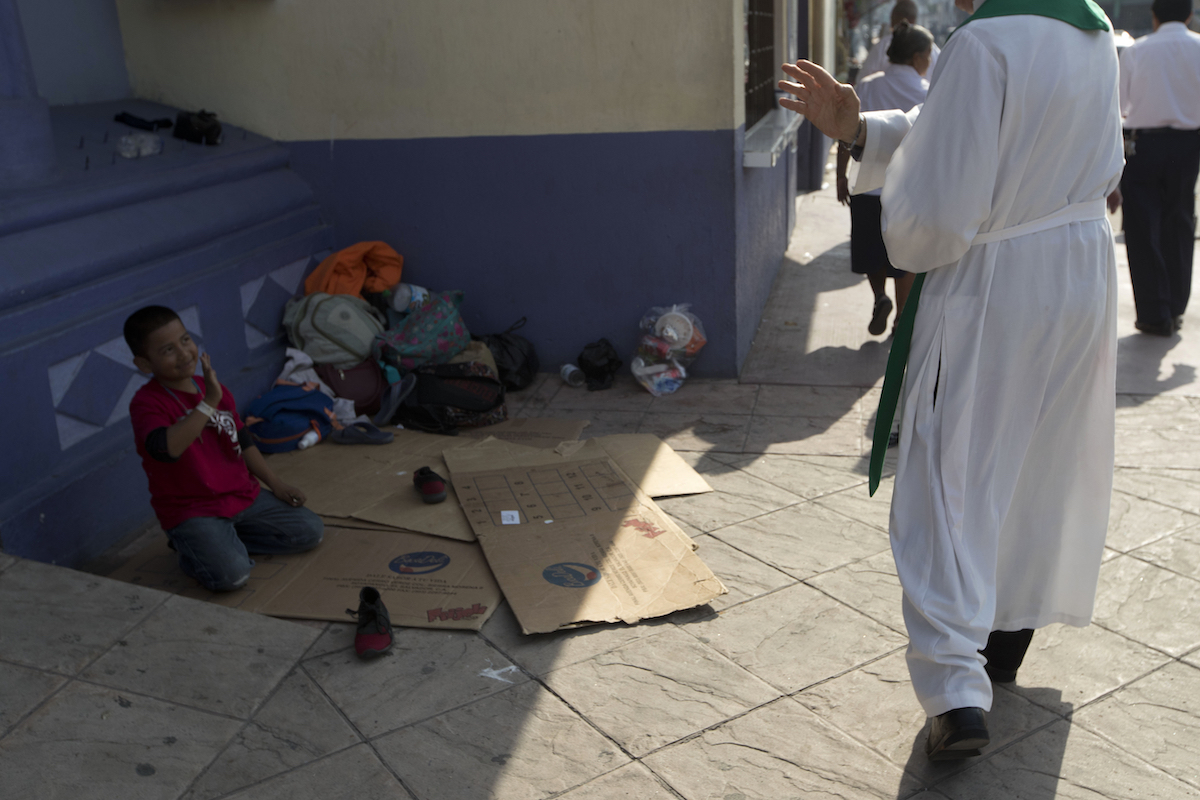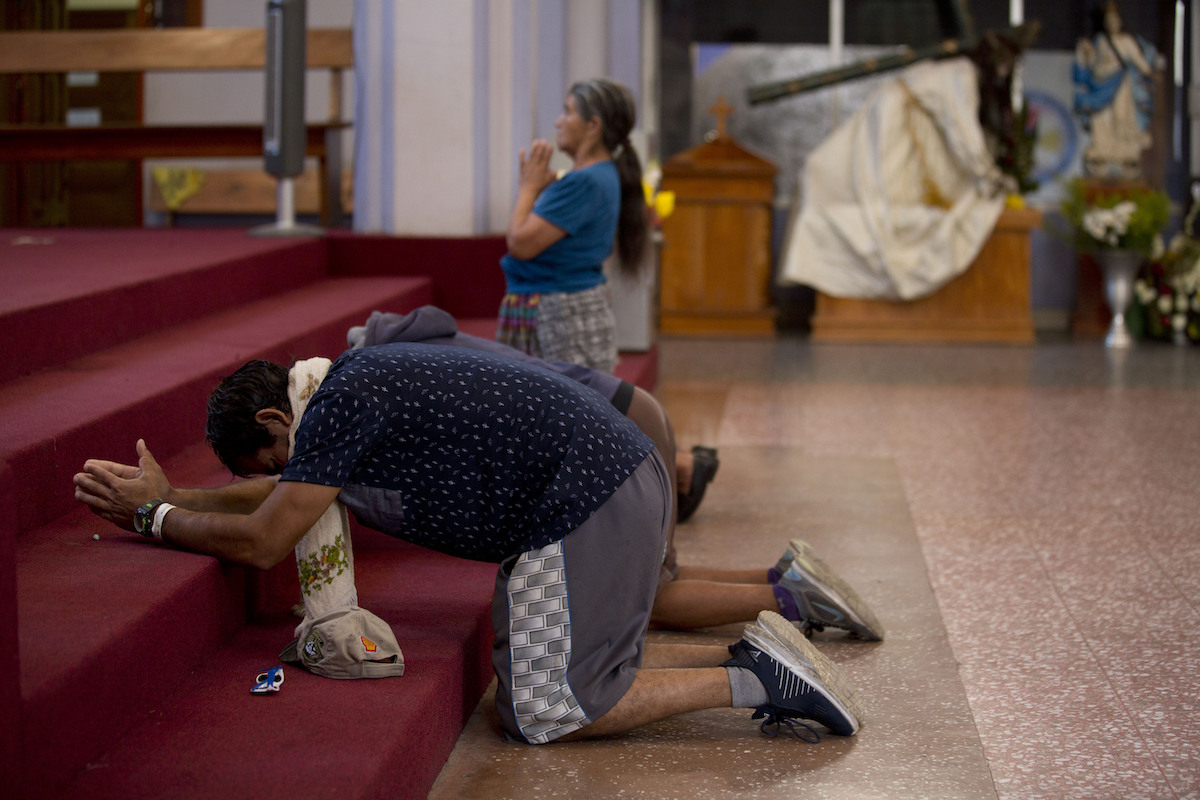

Fernando Cuevas, of the Scalabrinian Missionaries, celebrates Mass at a Catholic church in Tecún Umán, Guatemala, on the border with Mexico, Sunday, January 20, 2019. (AP Photo/Moisés Castillo)
By Sonia Pérez D. and María Verza, Associated Press
GUATEMALA CITY (AP) — When Pope Francis visits Panama this week, he arrives not only as the first Latin American pontiff to visit Central America but as perhaps the world’s most prominent advocate for migrants at a time when migration has become a pressing political issue in the region and elsewhere.
The Argentine-born son of Italian immigrants has long held the issue dear to his heart and has signaled that it will be a central theme during the trip, which comes as the latest caravan of Central Americans is wending its way toward the U.S.-Mexico frontier and President Donald Trump’s promised border wall has led to the longest government shutdown in the country’s history.
Francis’ emphasis on fundamental Christian teaching about welcoming the stranger, clothing the naked and feeding the hungry has been a breath of sustenance for those involved in efforts to aid migrants in Central America and Mexico, where Catholic priests, nuns and laypeople have taken the lead on attending to migrants amid what is often a vacuum of inaction and indifference by governments—or even outright hostility.
“It has been so hard, even within the church itself, to convince [people] that helping migrants is precisely part of the work of the church,” said Lidia Mara Souza, coordinator of the group Pastoral of Human Mobility in Honduras.
“But the pope has supported us tremendously, and I think now he comes to help us,” added Souza, a nun of the Scalabrinian order, which aids migrants as its vocation and is present along the length of the migratory route. “He must remind the politicians who declare themselves to be Christians to be that for real.”
The migratory trail north from Mexico and the violent Northern Triangle region of Central America is fraught with peril. Criminal gangs control much of the route and prey upon migrants, who are often stigmatized and face discrimination as they travel distances as long as 3,000 miles (5,000 kilometers) with little but dreams in their backpacks.


Central American migrants attend Mass at a Catholic church in Tecún Umán, Guatemala, on the border with Mexico, Sunday, January 20, 2019. (AP Photo/Moisés Castillo)
All along the way, they rely on a network of support in the form of Catholic-run shelters where they can find a place to sleep, be safe from the cartels and get a meal or advice.
Scalabrinians were among the first to start ministering to migrants in this part of the world, in the mid-1980s opening a shelter in Tijuana, across from San Diego. At the time, migration was largely an ignored phenomenon, said Bishop Raúl Vera of Saltillo in northern Mexico, one of the first Mexicans to get involved in the cause.
Little by little, Vera said, the network of safe houses tied to the church sprang up over the following decades to reach the current number of over 80 in Mexico, El Salvador, Guatemala and Honduras.
“The migrants became the messengers,” the bishop said. “They told us, ‘Here they mistreat us, here they receive us well.’ And that way we began to see that in many places we were duplicating efforts and we began to coordinate among ourselves.”
In Honduras, Souza recalled, nuns attended to refugees from civil wars in El Salvador, Guatemala and Nicaragua, but soon they realized that many people were also leaving that country and still more were being returned from the United States. Now their main focus is on deportees, who in some ways are the most vulnerable.
“When the systematic deportations from the United States began, those who came back were people linked to the gangs, and I think the stigma was created that deportees are criminals and we shouldn’t help them,” Souza said.
Today many deportees to Central America are people who fled gang threats in the first place, and are sometimes hunted down and murdered once back home.
Shelters have expanded the services they offer to include medical, legal and psychological aid. Workers have also had to learn how to attend to migrants victimized by gangs—robbery, kidnapping, extortion, sexual assault, murder or disappearance.


Carlos Titoto, a priest with Scalabrinian Missionaries, blesses a young Central American migrant sitting outside a Catholic church in Tecún Umán, Guatemala on the border with Mexico, Sunday, January 20, 2019. (AP Photo/Moisés Castillo)
“It has been very hard,” said the Rev. Alejandro Solalinde, who runs a shelter in Ixtepec in southern Mexico where human trafficking is big cartel business. “We are talking about organized crime and authorized crime,” he added, a reference to complicity by authorities.
Vera said Francis has given clear instructions on attending to migrants that can be summed in four verbs: welcome, protect, promote and integrate.
Putting those into practice is more important than ever in the face of caravans born out of poverty and violence in the region, according to Mauro Verzeletti, director of the Casa del Migrante shelter in Guatemala City.
“From now on it will be a modality of the migratory phenomenon because the countries of Central America have collapsed and are not working for the welfare of the people,” Verzeletti has said in the past.
The caravans over the last year have strained capacity, and workers fear that is unlikely to abate.
In the Guatemalan city of Tecún Umán, on Mexico’s southern border, Jairo Reyes, a participant in the caravan, was sleeping on cardboard in a park this weekend after there hadn’t been room at Casa del Migrante. Reyes is an evangelical Christian but was grateful to the Catholic shelter, which gave him a stroller for his 2-year-old baby, which he had previously been carrying in his arms.
“We are all children of God,” said the 31-year-old single father, also traveling with a 4-year-old.
Reyes was happy to think that Francis would come to Central America and advocate for migrants like them, saying, “May he touch people’s hearts.”
Since his pontificate began in 2013, Francis has demanded governments do more to welcome and integrate those fleeing conflict, natural disasters and poverty. He has matched his preaching with practice, famously bringing a dozen Syrian refugees with him when he travelled to a refugee camp on Lesbos, Greece, and celebrating a Mass for migrants on the Sicilian island of Lampedusa, ground zero in Europe’s migration crisis, in his first trip outside Rome.


Migrant Juan Carlos Vargas, from San Pedro Sula, Honduras, prays in a Catholic church in Tecún Umán, Guatemala, on the border with Mexico, Sunday, January 20, 2019. (AP Photo/Moisés Castillo)
He has also responded to Trump’s demand for a wall on the U.S.-Mexico border with calls for “bridges not walls.” When asked specifically about Trump’s plans, after a trip to the border to celebrate Mass, Francis said anyone who wants to build a wall “isn’t Christian.”
That resonates strongly among the Scalabrinians who devote their work to migrants.
“Walls are not for human beings,” Souza said by phone from Honduras. “They are for merchandise and for organized crime.”
Andrew Chesnut, a professor of religious studies at Virginia Commonwealth University, said that in Panama, Francis is likely to make “a prophetic call for governments, above all the United States and Mexico, to receive Central American migrants with respect and dignity” in addition to denouncing poverty, corruption, drug violence and killings of women.
The church as an institution has not always fully supported efforts to aid migrants, but Francis’ renewed emphasis on caring for the most vulnerable has inspired those working in the network.
“It changed a lot, and it could change more if many [Latin American] bishops paid attention to him,” Solalinde said.
“We are in very important times of change in which the Catholic Church has a great opportunity, but it is not easy because it has been too captive to rigid structures that do not let it advance,” Solalinde said. “The migrant offers us the possibility of once again being a poor, pilgrim, missionary and itinerant church.”
***
Associated Press writer Sonia Pérez D. reported this story in Guatemala City and AP writer María Verza reported from Mexico City. AP writers Nicole Winfield at the Vatican, Juan Zamorano in Panama City and Marcos Alemán in San Salvador, El Salvador, contributed to this report.


